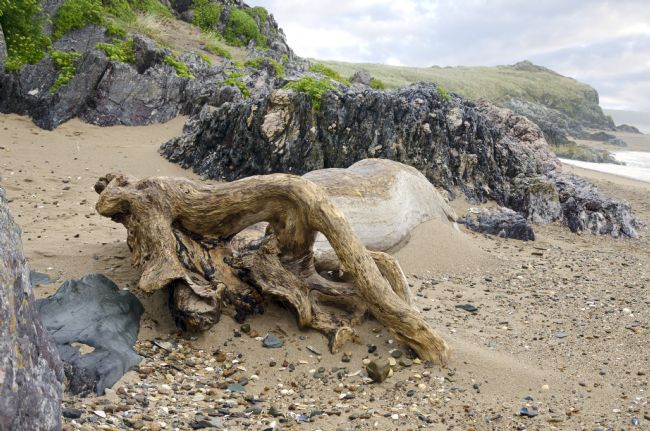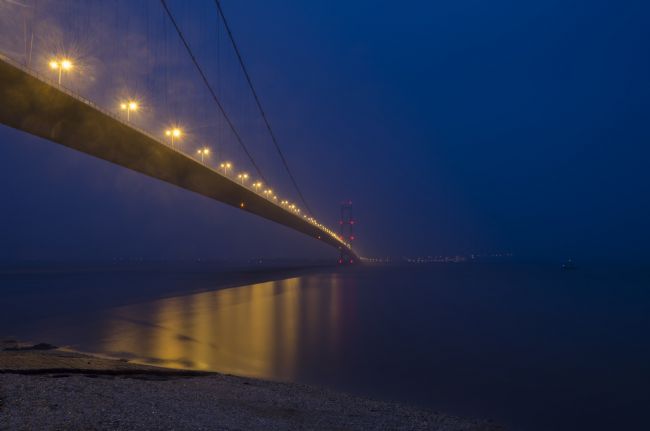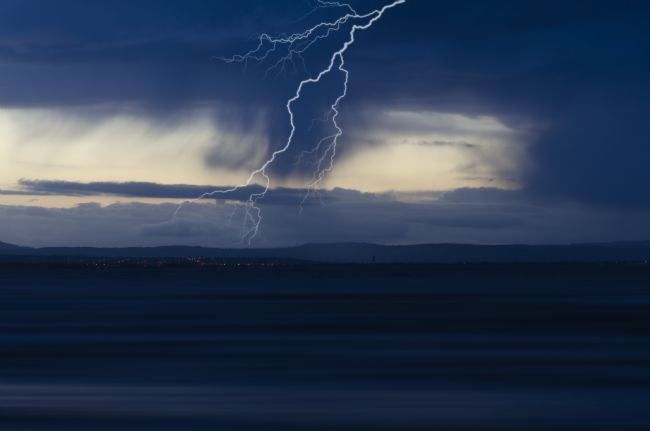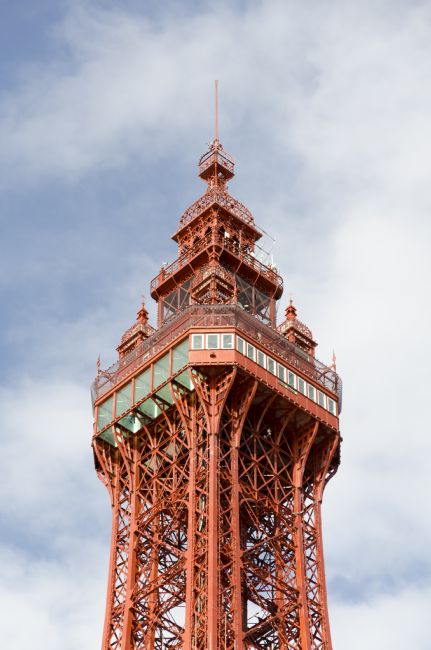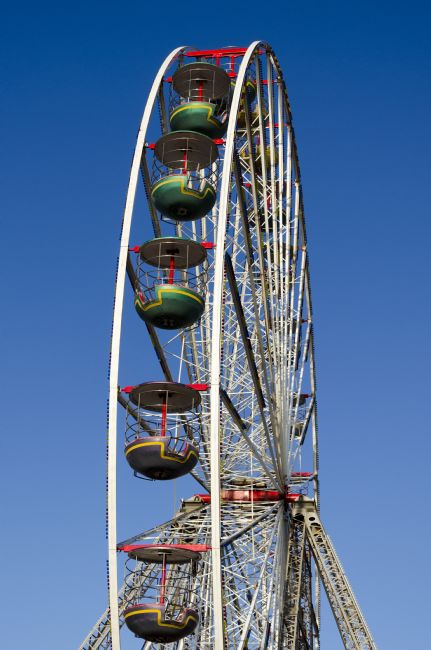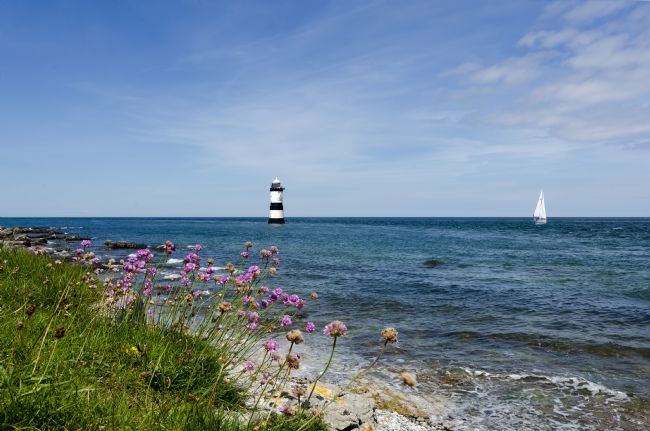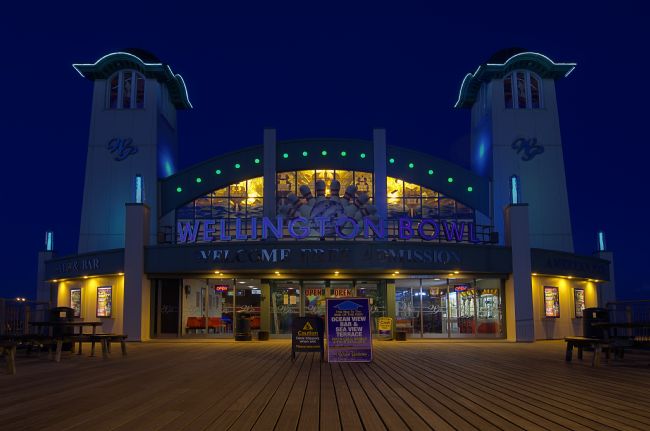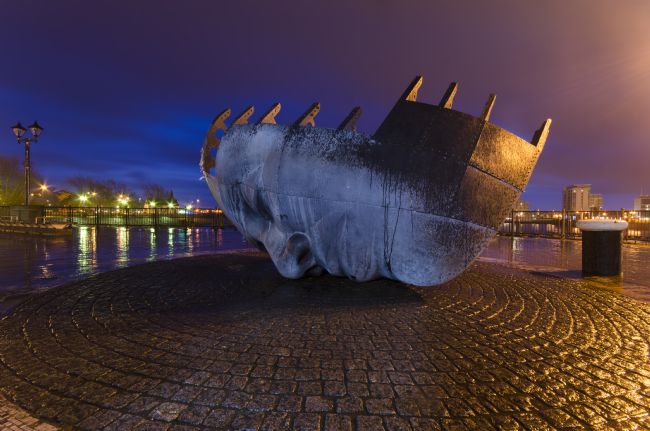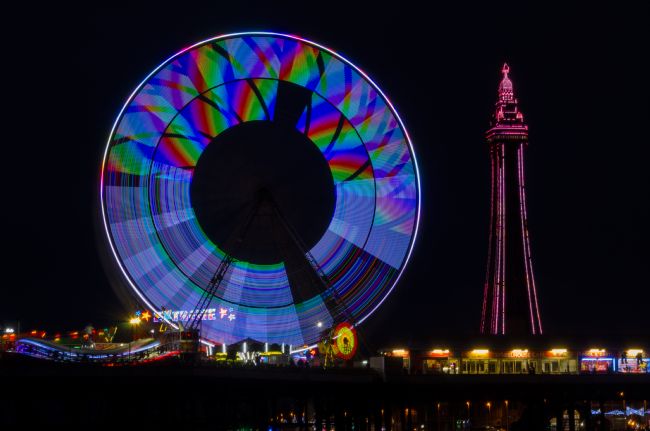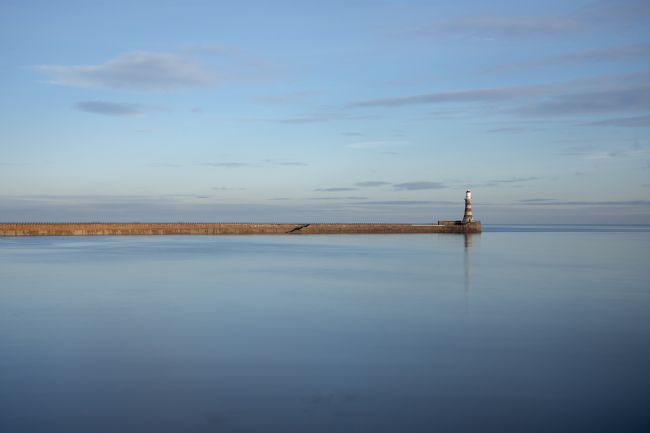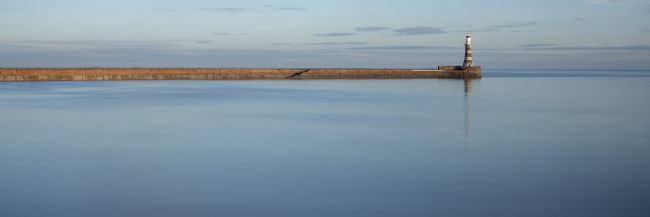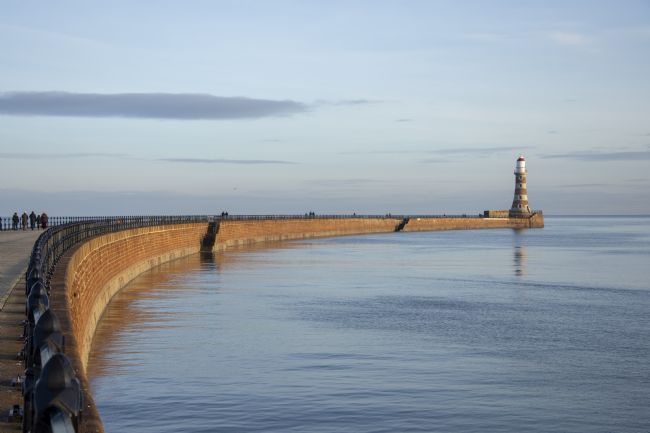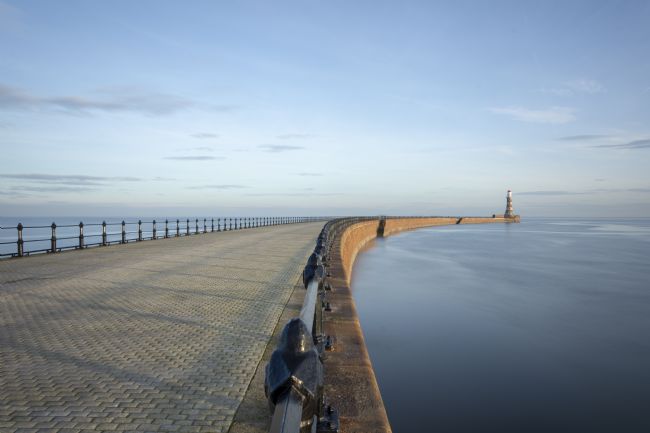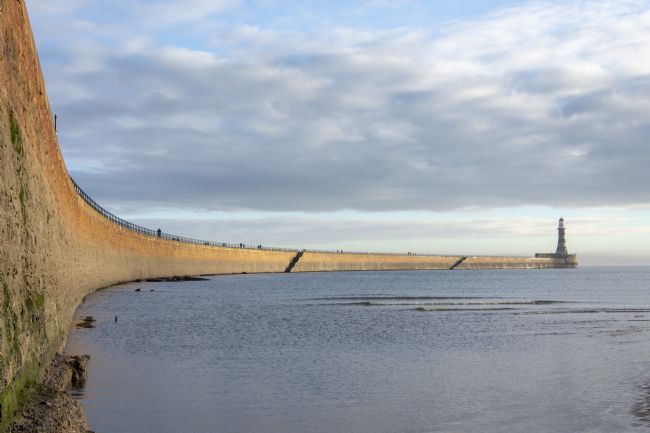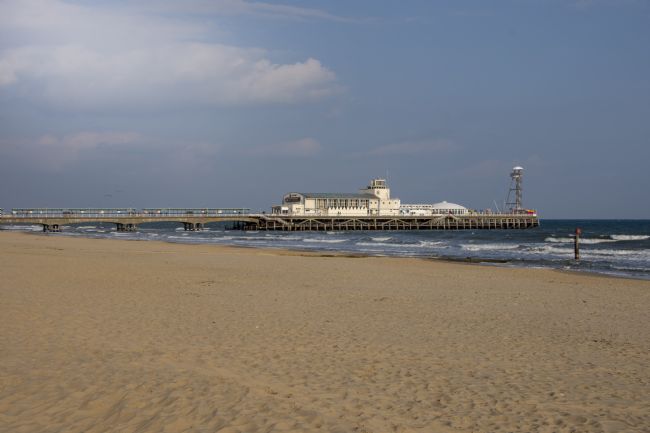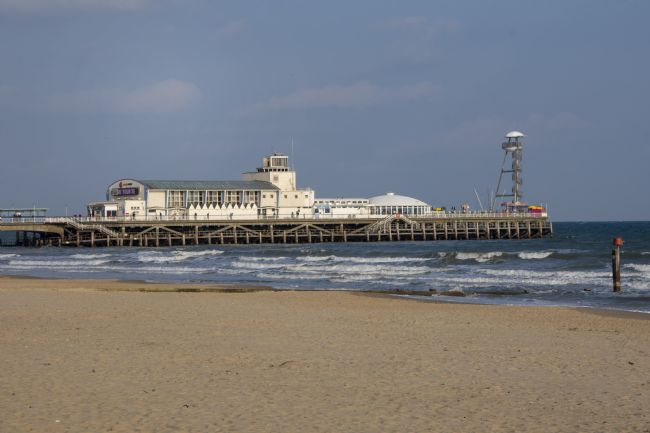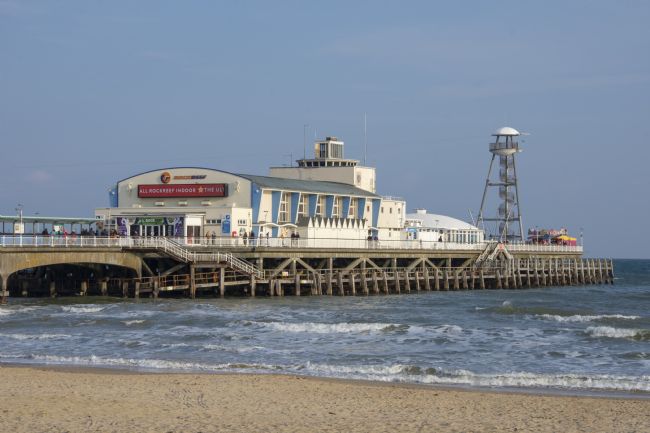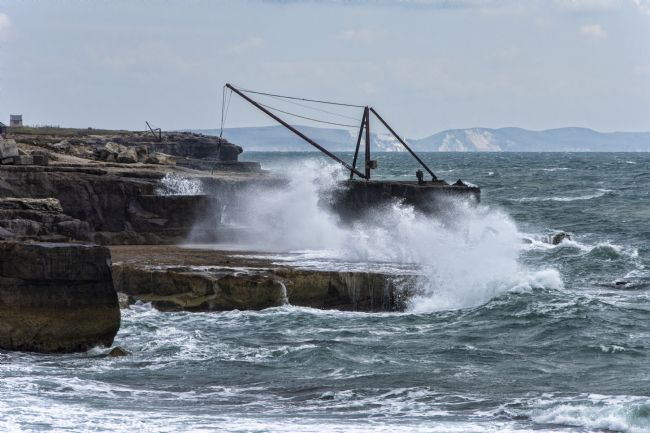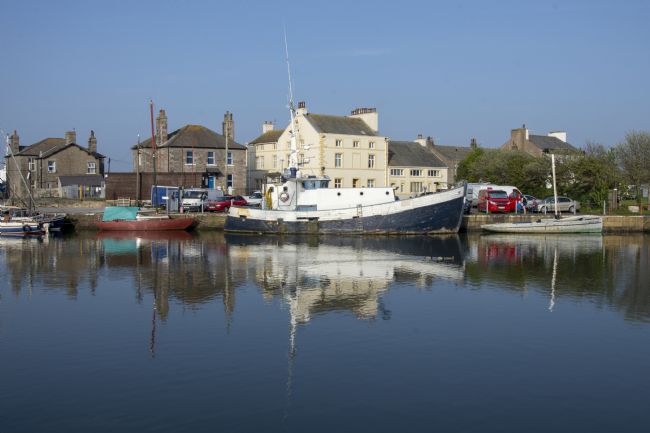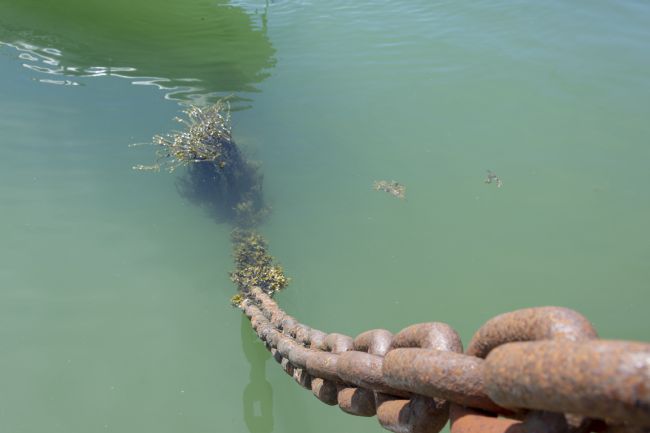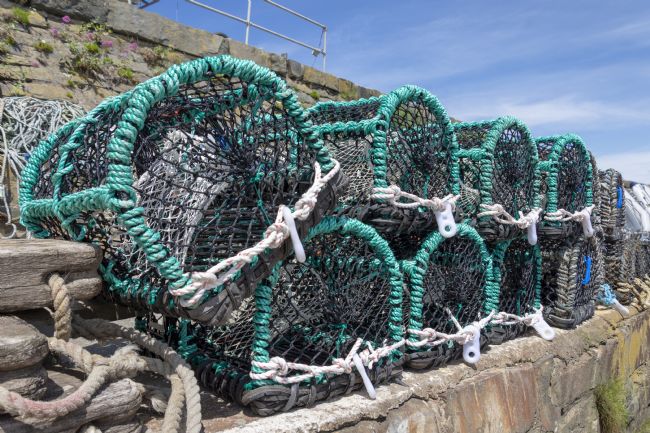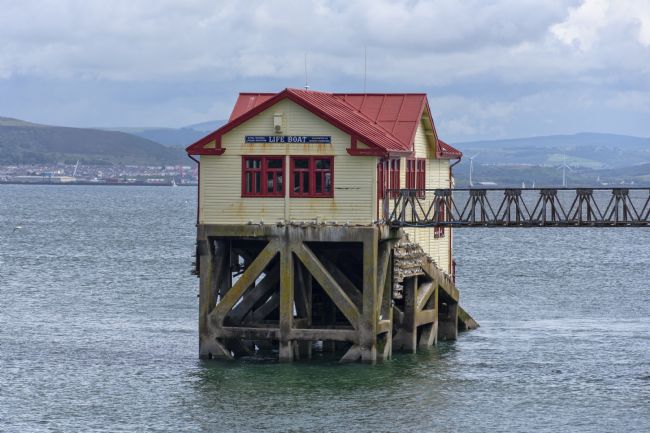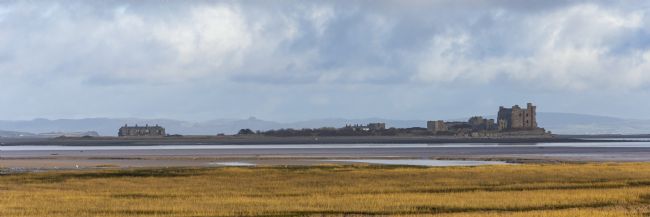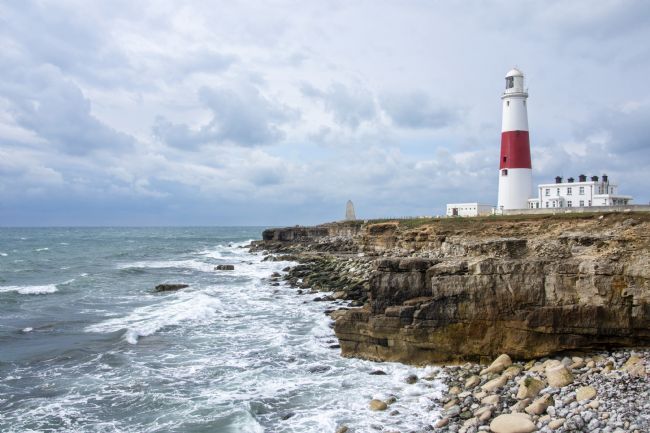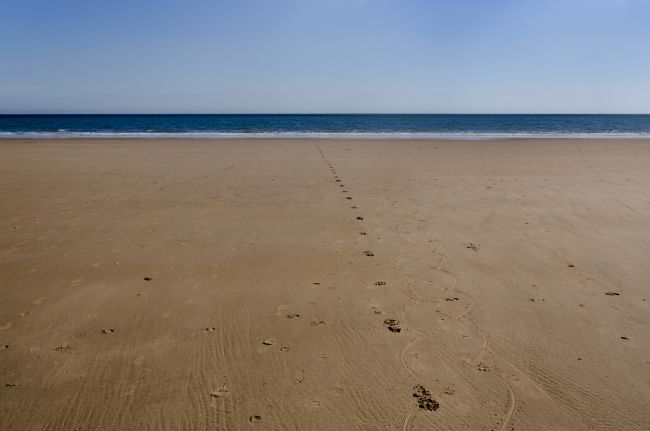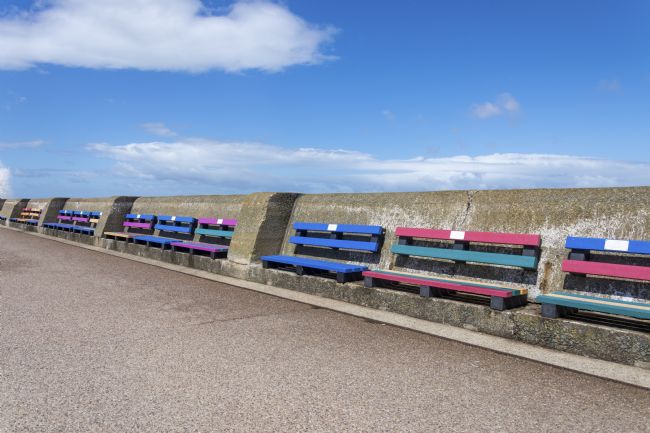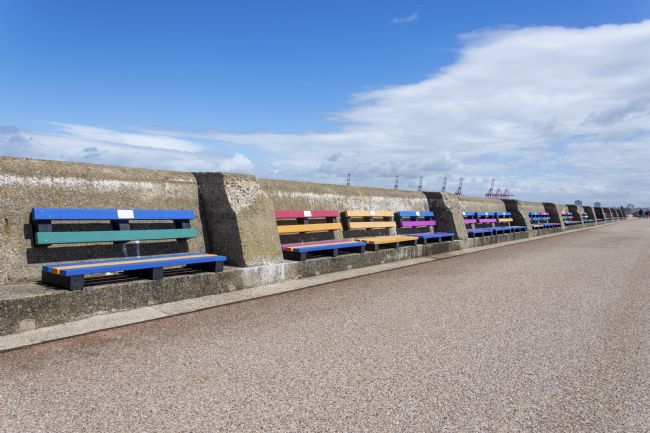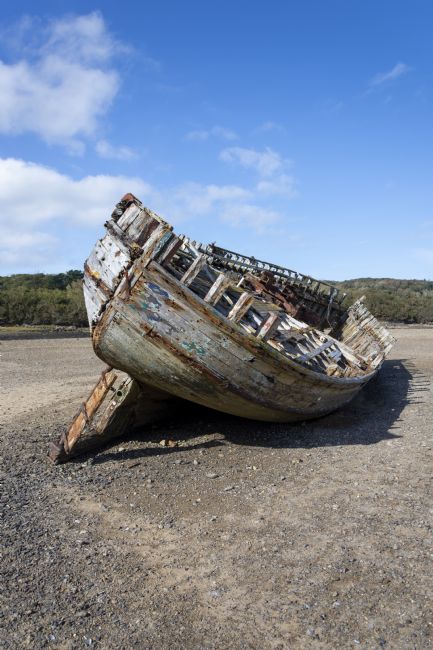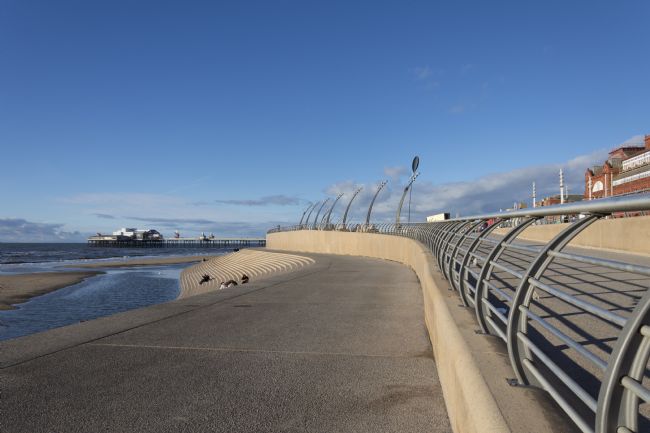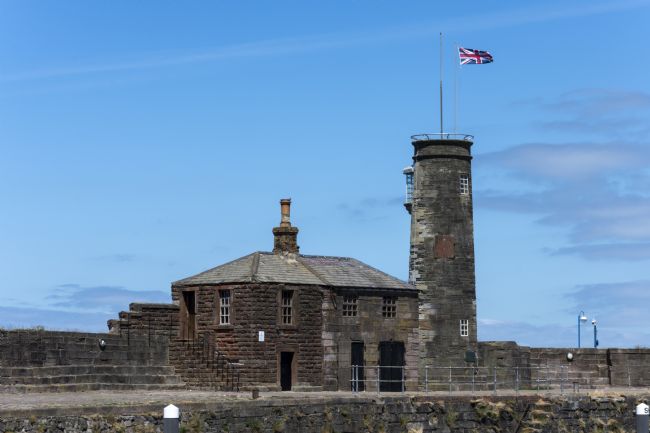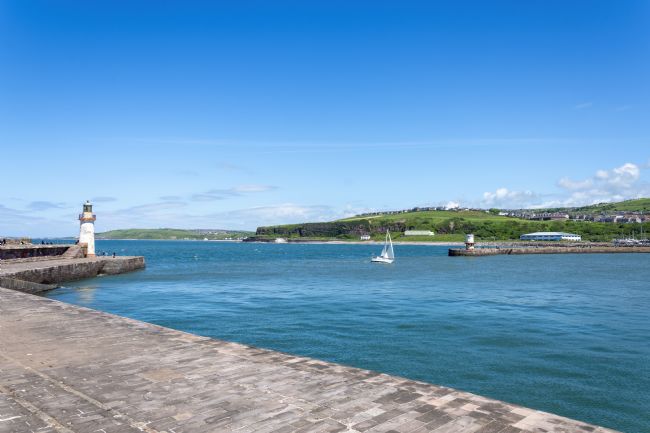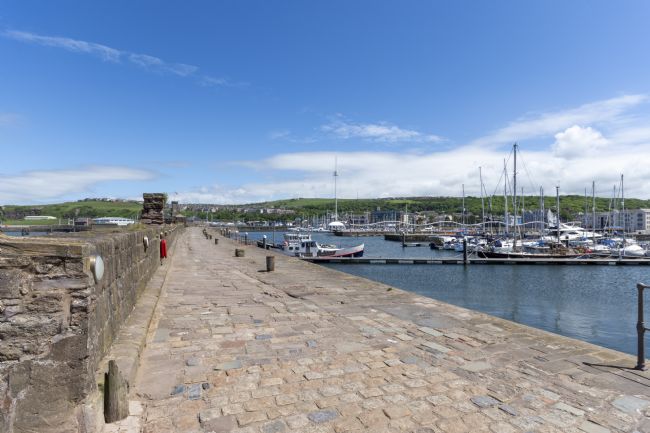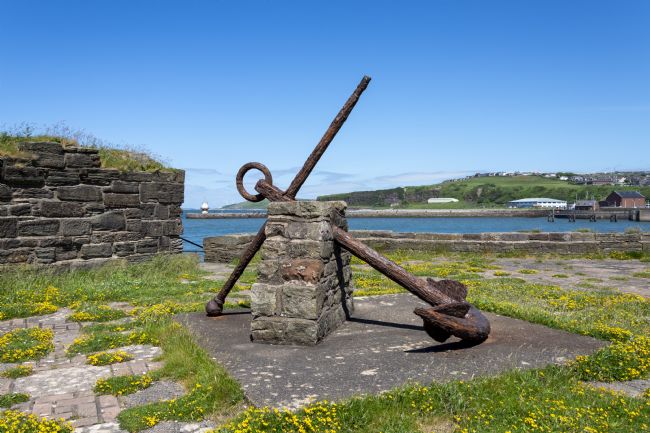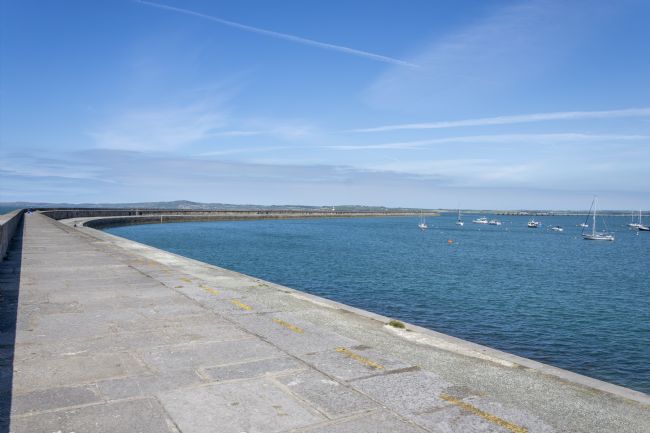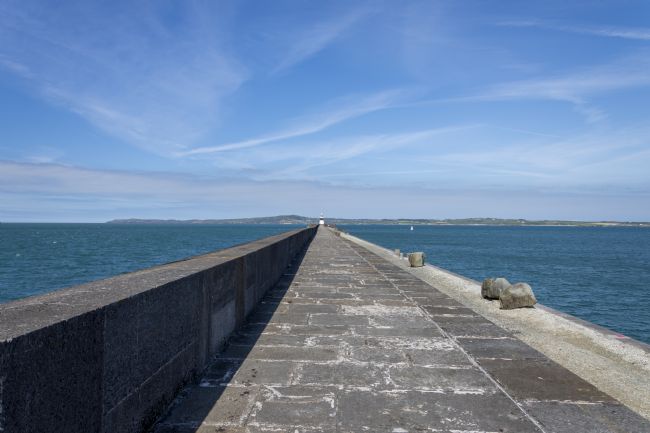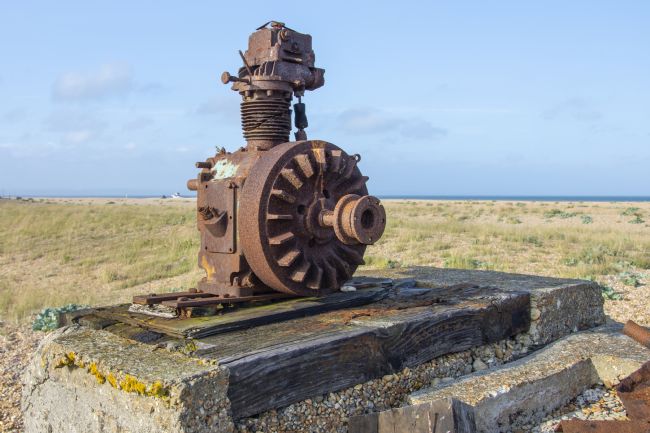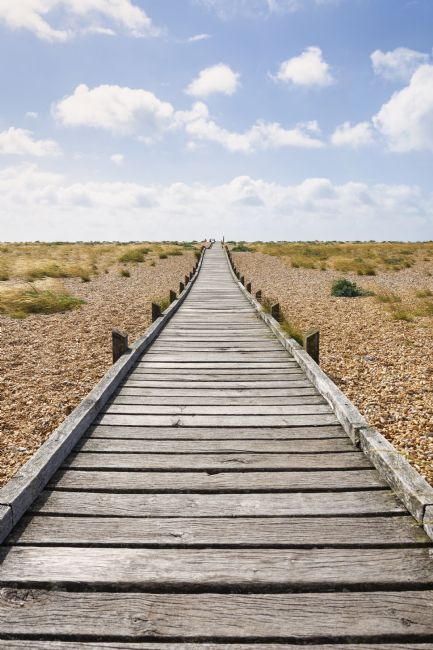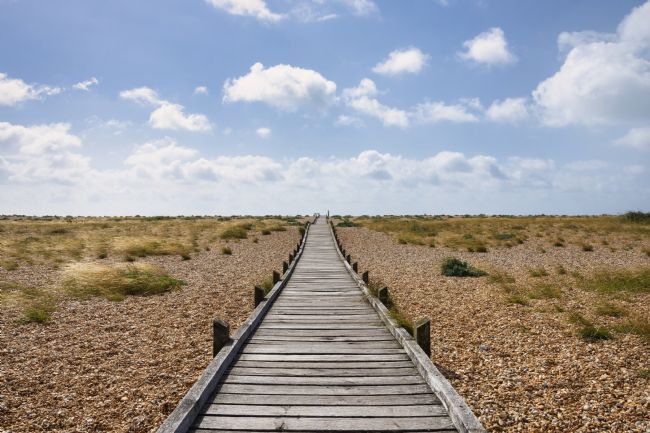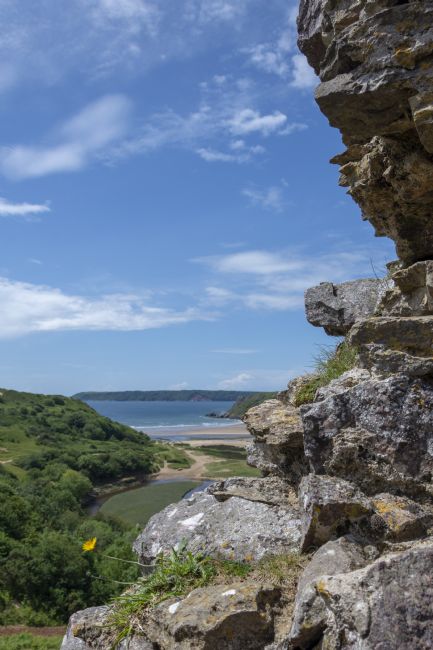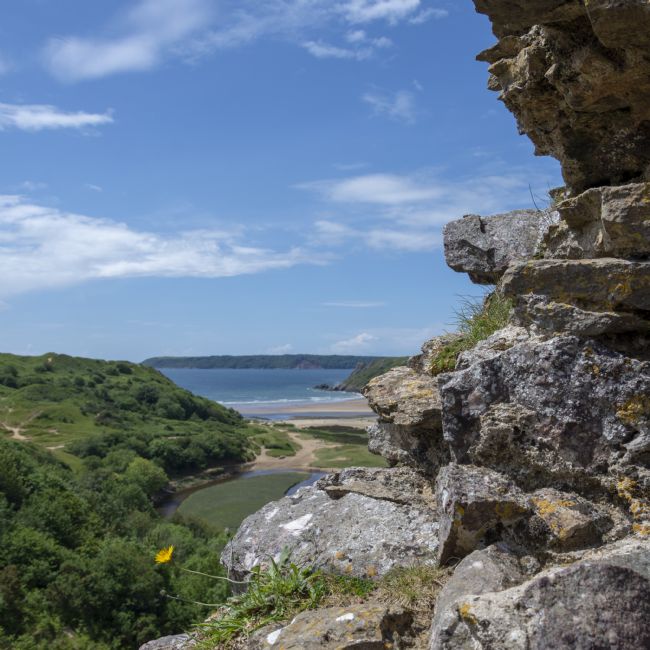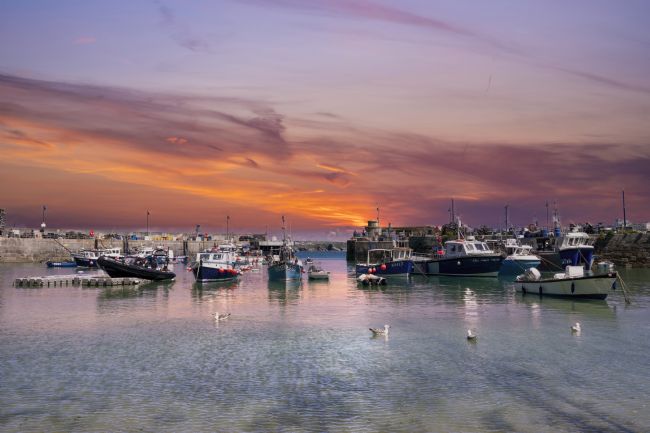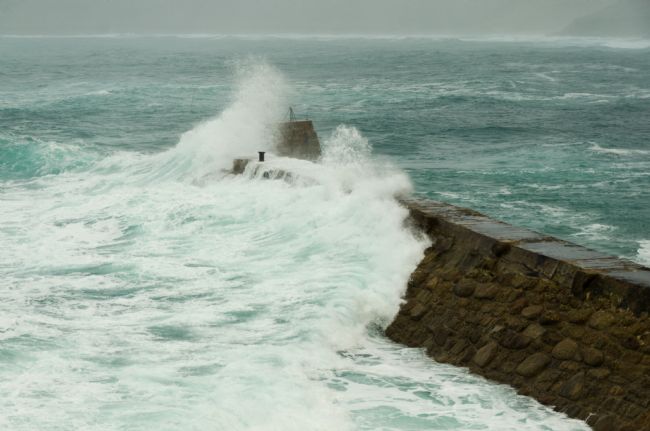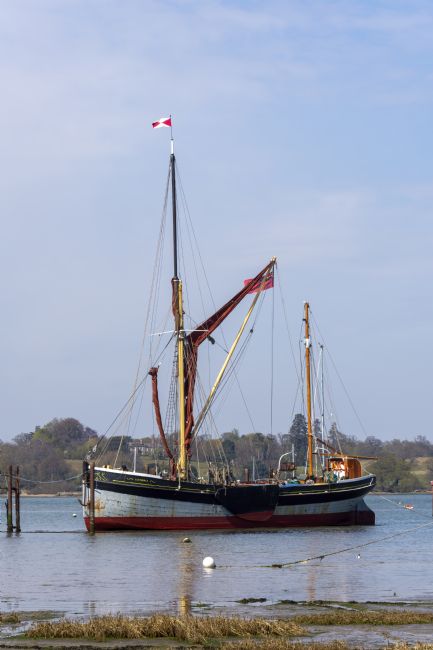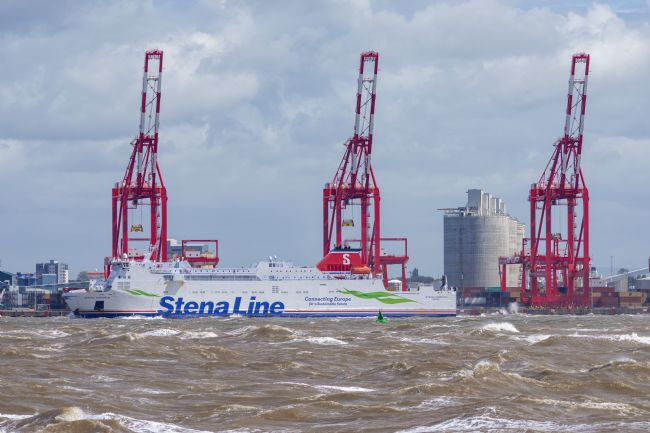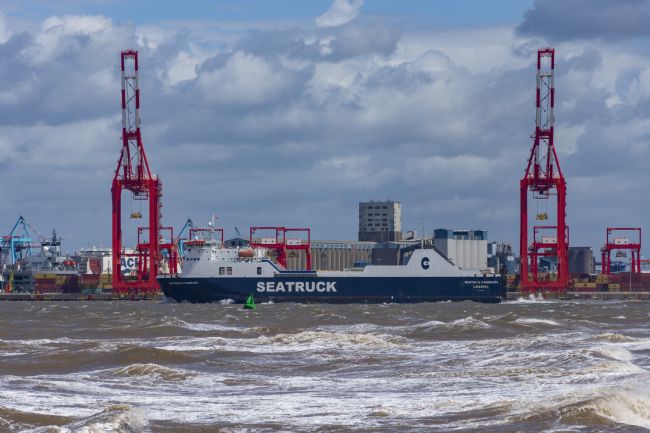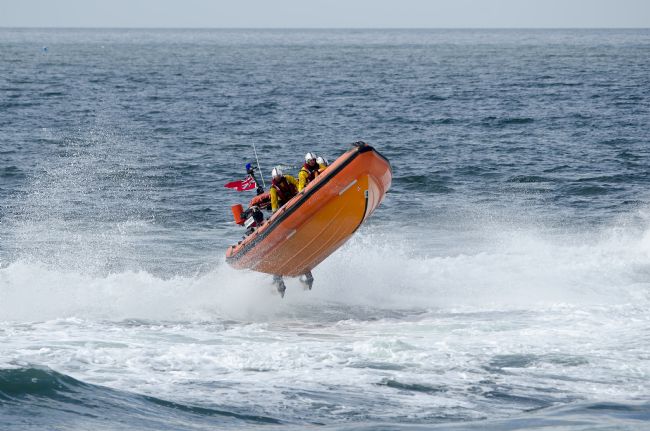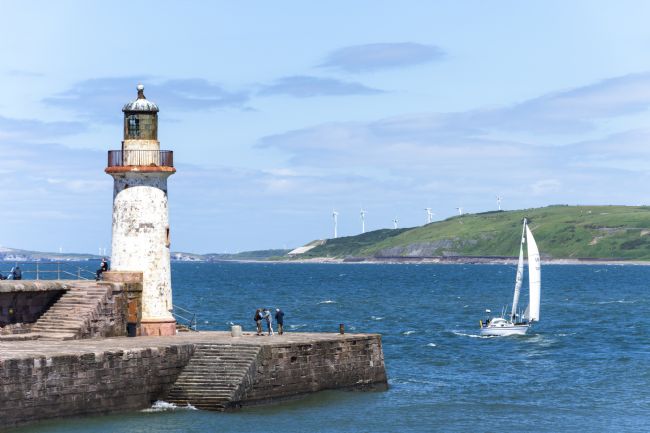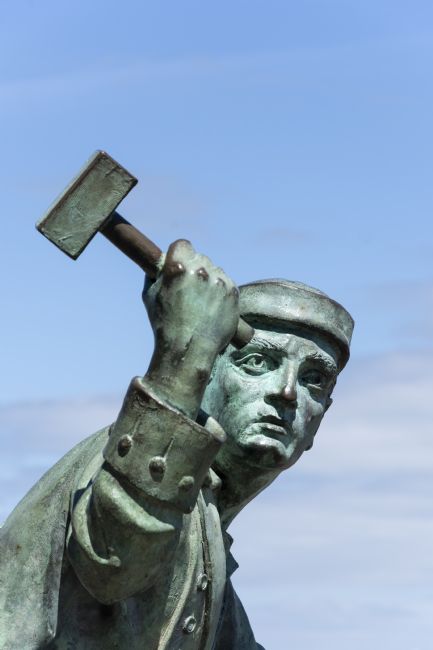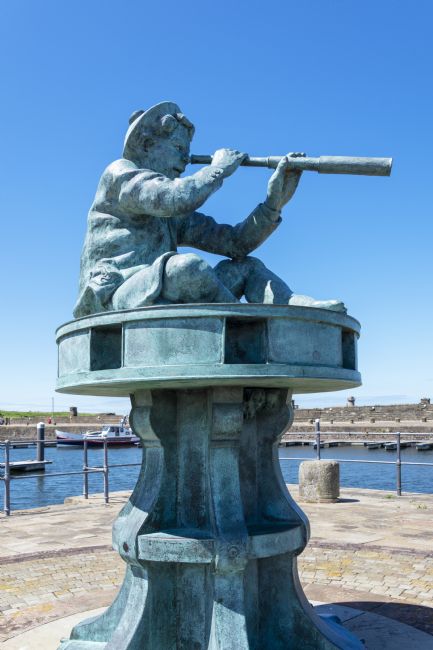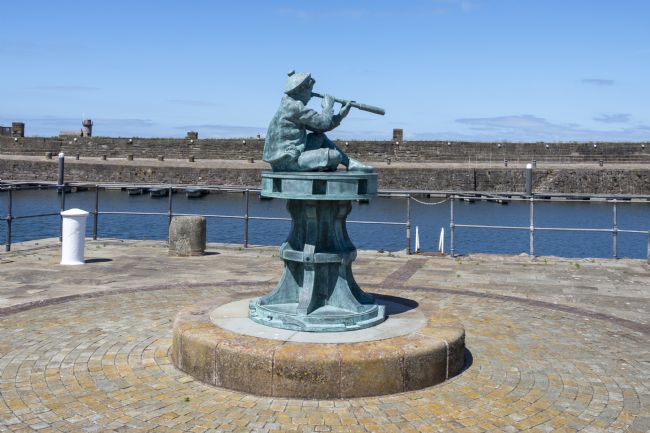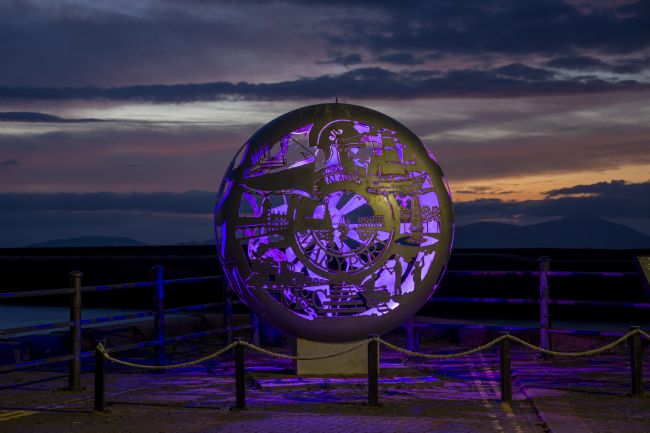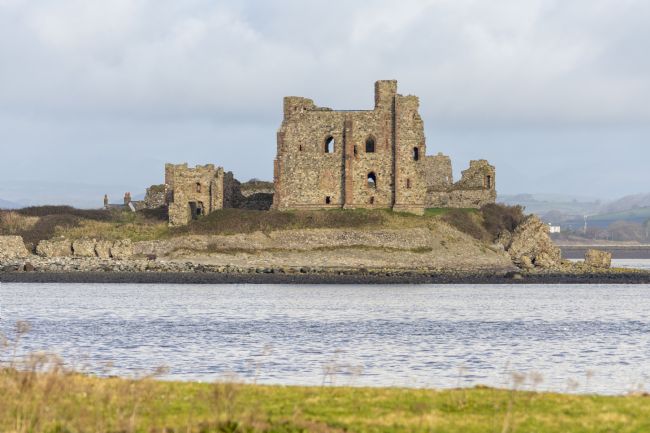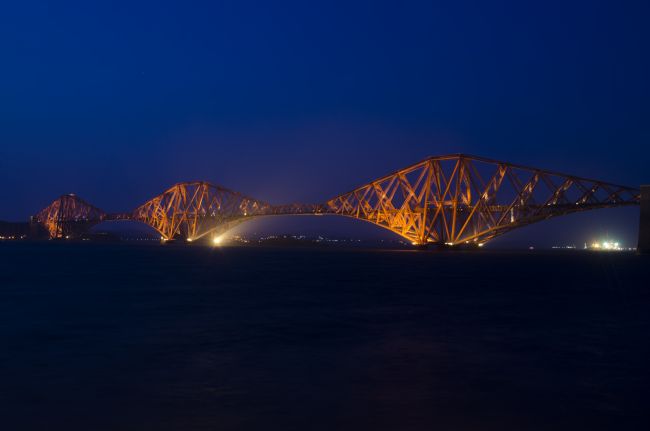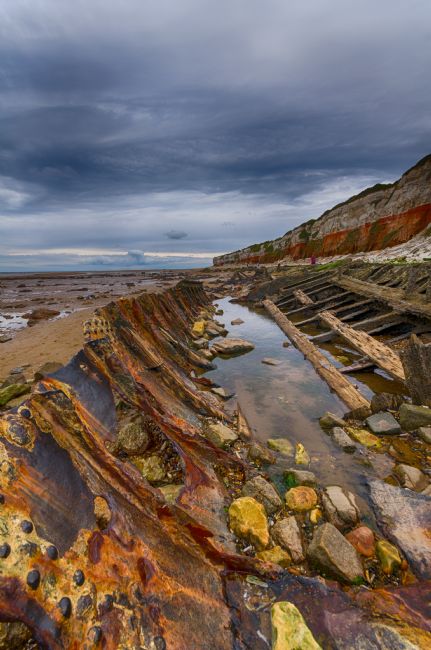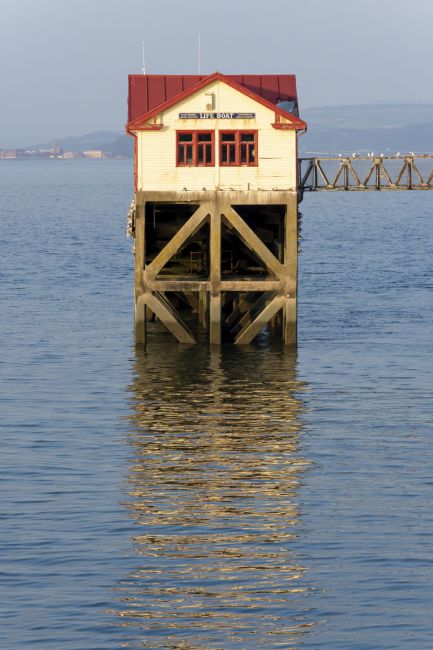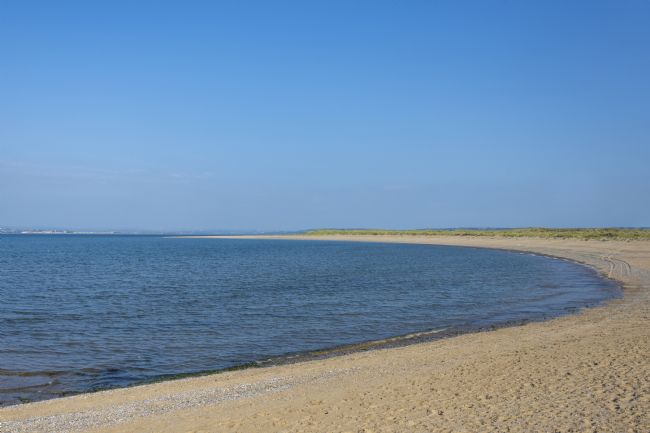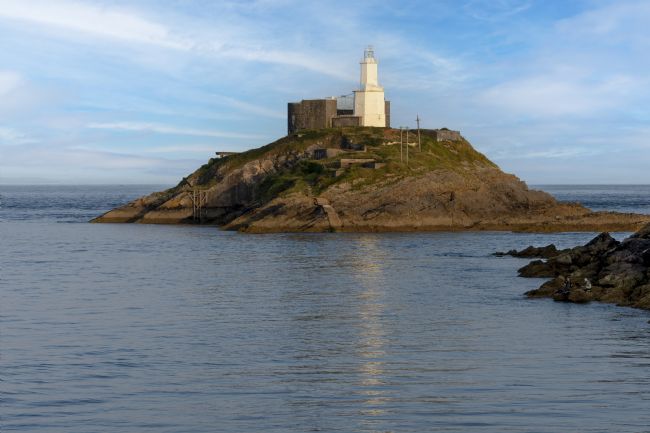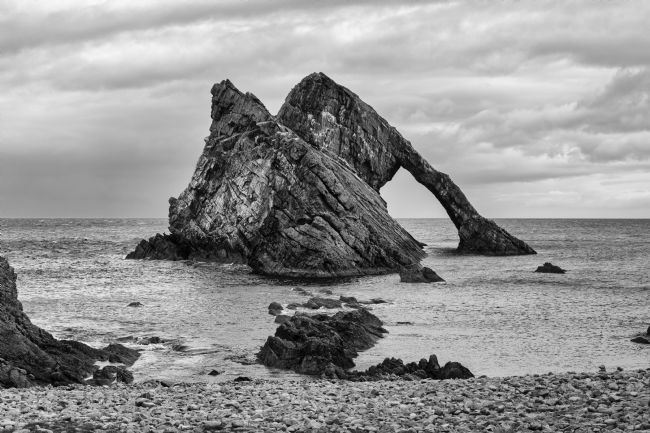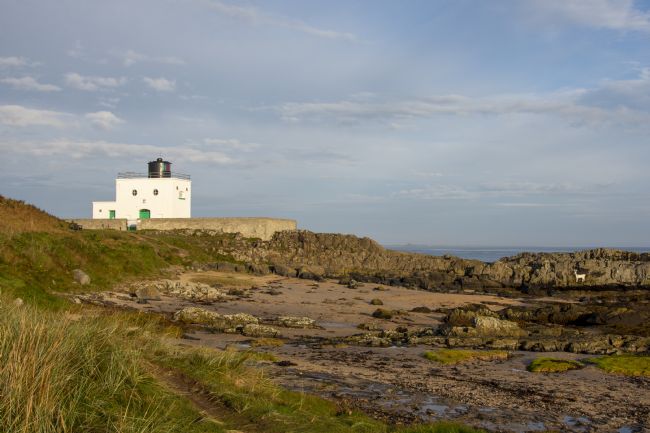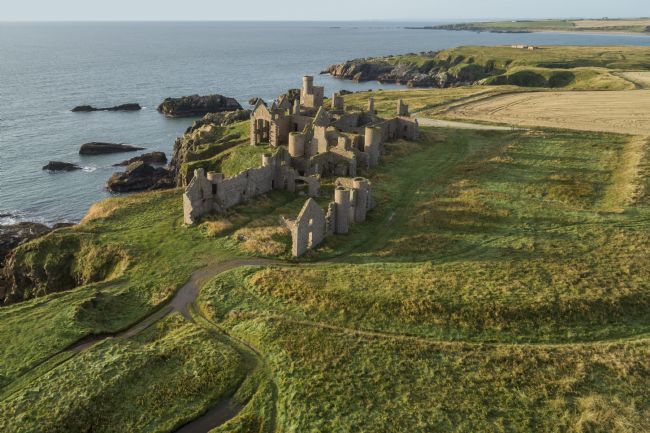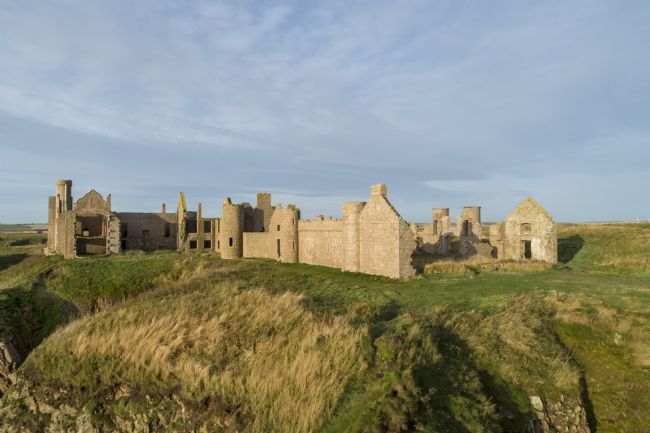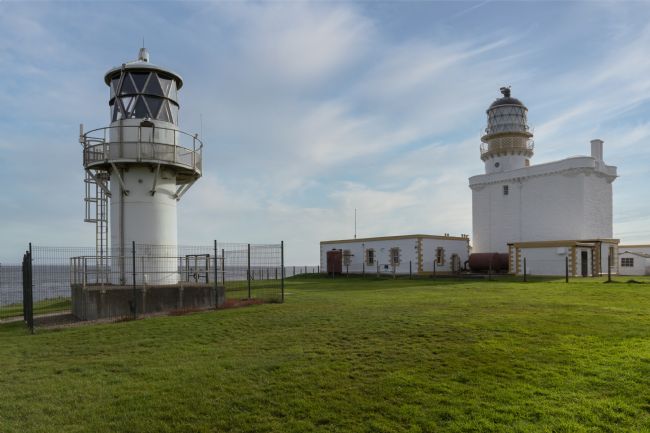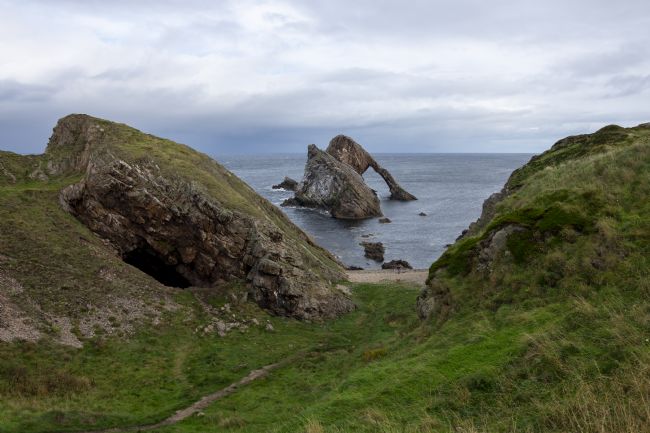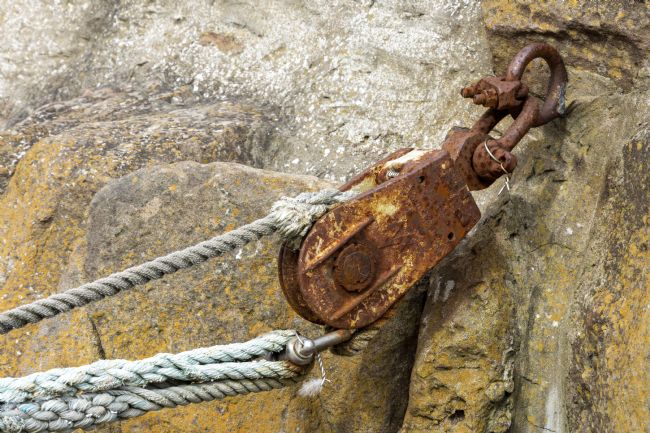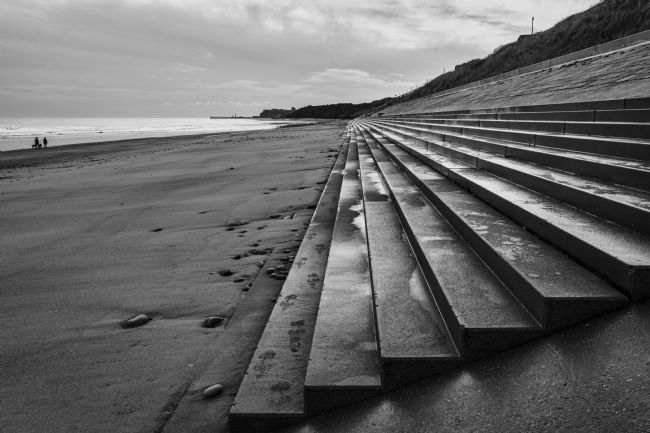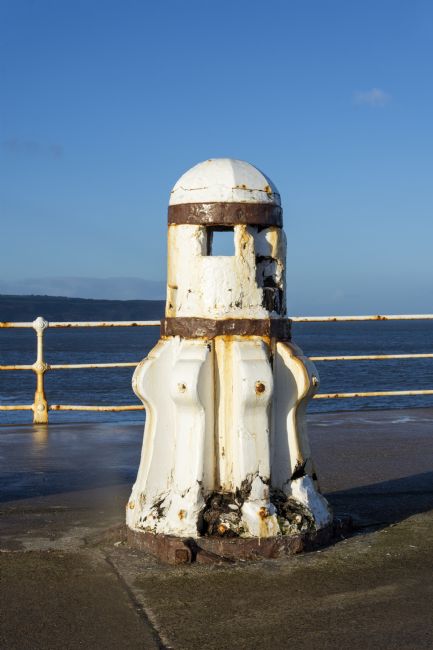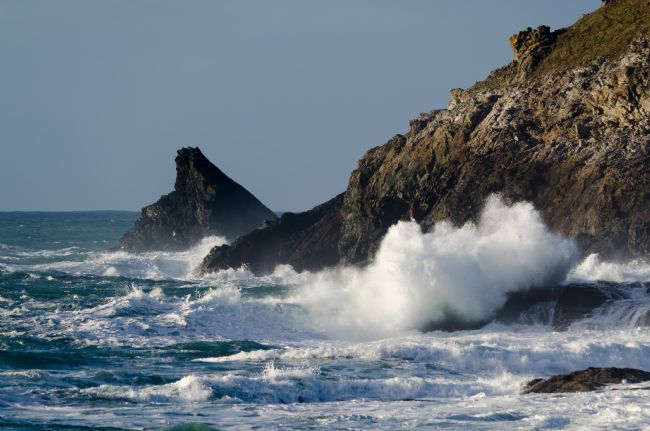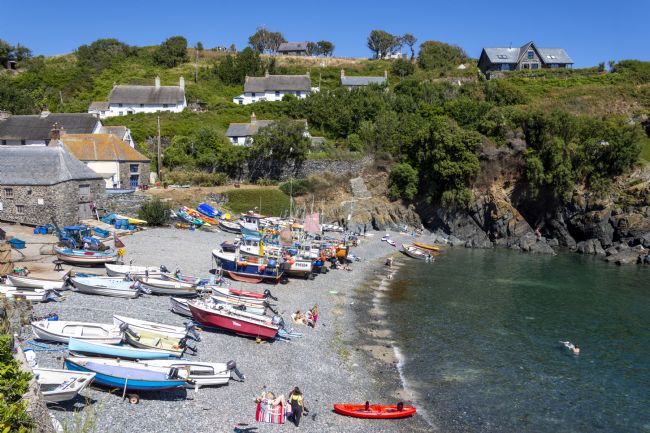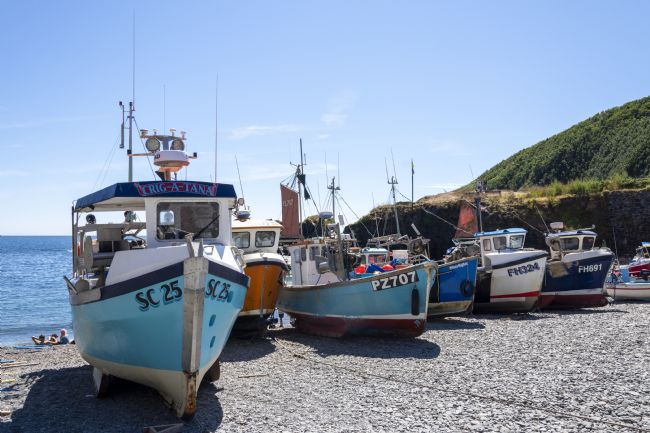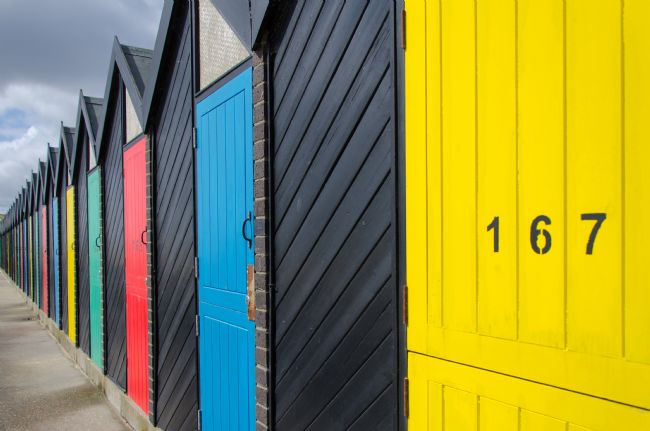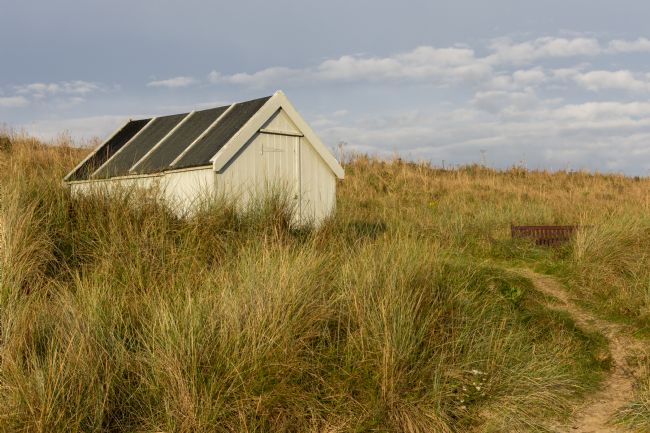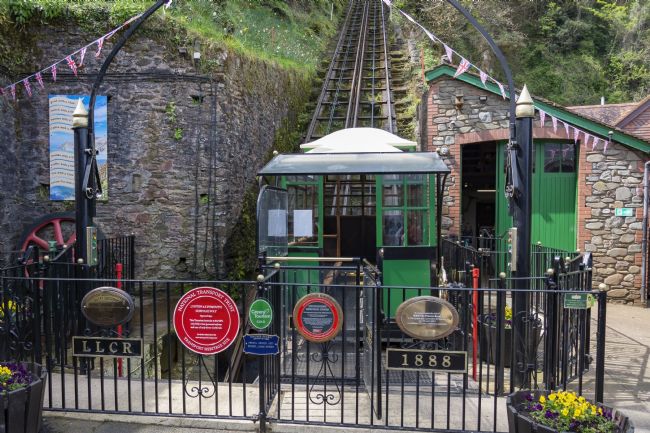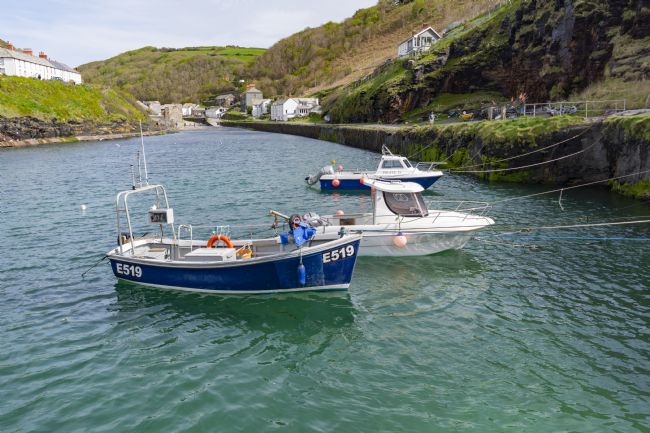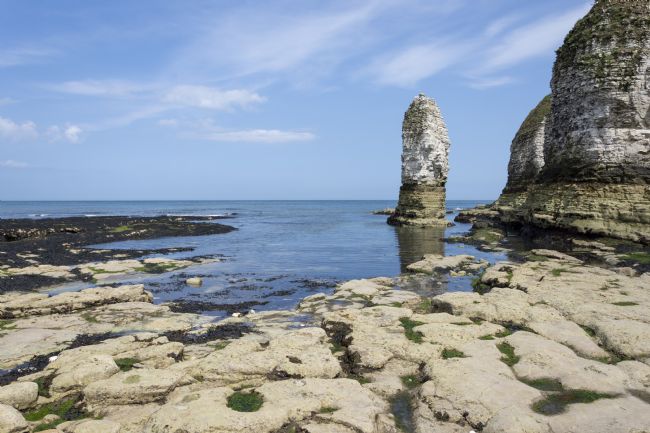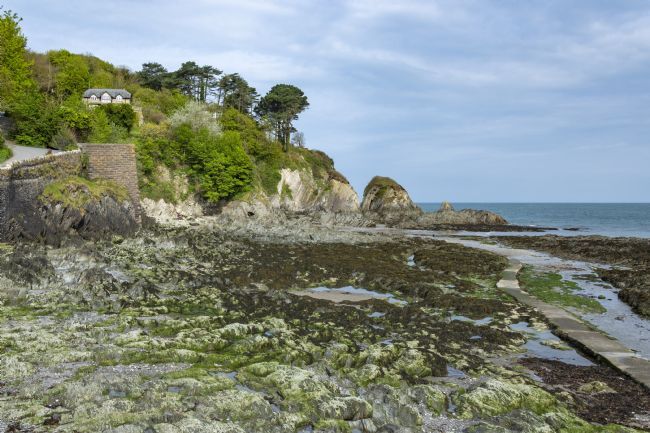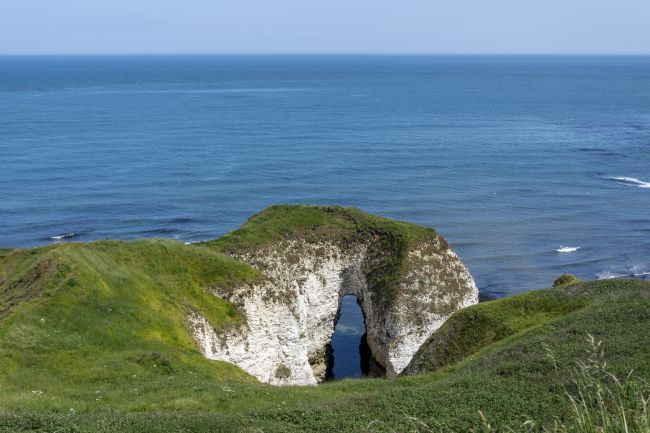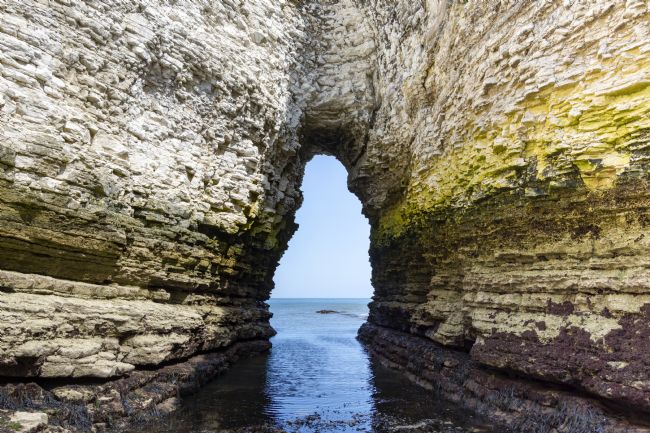A track of footprints in the sand, blue sky, blue sea.
A large piece of driftwood on LLanddwyn Island, Anglesey, Wales.
A view of the Humber bridge by twilight. Persistent rain gave the lights a series of 'twinkles' and long exposure smoothed the water.
Seascape with brooding sky and lightning
Top section of the Blackpool Tower, Lancashire showing the 'Skywalk' or 'Blackpool Eye' - a glass fronted and floored observation platform where ony the brave dare to tread.
An ever popular ride the ferris wheel, also known as a big wheel offers riders a brief chance to see things from above. Possibly the most famous big wheel is the London Eye, but several other portable big wheels tour the country as mobile attractions.
Trwyn Du - also known as Black Point lighthouse gaurds shipping from the rocks at Penmon. Just to the right of this image is Puffin Island.
Great Yarmouth seafront - Wellington pier taken early evening.
A bright blue bucket and spade on the beach.
This is the Merchant Seafarer's War Memorial situated at Britannia Quay, Cardiff Bay, Wales. The artist is Brian Fell and it is in memory of the merchant seafarers from the ports of Barry Penarth and Cardiff who died in time of war. Commissioned in 1994 by the Cardiff Bay Arts Trust it comprises a melding together of a man's face and the damaged hull of a ship. DSD_8170
The kaleidoscope effect on the big wheel on Blackpool central pier. This is caused by a long exposure capturing the ever-changing light pattern on both the wheel and the Blackpool Tower leading to the image you see here.
One of several decorated and illuminated trams - this one as a western style locomotive complete with following carriage. Blackpool is a major UK tourist destination and the light show attracts many thousands of visitors each year. Look closely at the front and you can just make out the driver.
Roker is famous for its lighthouse and rather long pier. Seen here on a calm day the smoothness of water has been enhanced by the use of a long shutter speed. This image is also available as a 3:1 panoramic.
Roker is famous for its lighthouse and rather long pier. Seen here on a calm day the smoothness of water has been enhanced by the use of a long shutter speed. This image is also available as a more normal landscape orientation.
As the sun slowly sets the golden hour sunlight enhances the natural colours of Roker Pier and lighthouse.
The old breakwater at Seaham harbour long ago lost its railings so was closed to the public. These fishermen belong to a private club and I guess one of the conditions must surely be 'at your own risk'. Lacking my ND filter this is a 3 shot merge to blend the calmer portions of sea together.
As the sun slowly sets the golden hour sunlight enhances the natural colours of Roker Pier and lighthouse, the sea is calm and the freshly washed stones of the beach add foreground interest.
At the turning of the tide and as the sun slowly sets the golden hour sunlight enhances the natural colours of Roker Pier and lighthouse.
Reaching 2,000 feet out into the sea Roker Pier is seen here in the afternoon sunlight. Forming a safe way into Sunderland harbour the entire construction of pier and lighthouse was completed in 1903.
Bournemouth is a seaside town on the south coast of England. The pier was opened by the Lord Mayor of London in 1880 and was at that time 838 feet long. Two extensions in 1894 and 1909 saw this reach 1,000 feet.
Bournemouth is a seaside town on the south coast of England. The pier was opened by the Lord Mayor of London in 1880 and was at that time 838 feet long. Two extensions in 1894 and 1909 saw this reach 1,000 feet.
Bournemouth is a seaside town on the south coast of England. The pier was opened by the Lord Mayor of London in 1880 and was at that time 838 feet long. Two extensions in 1894 and 1909 saw this reach 1,000 feet.
Here we see one of several now abandoned cranes at Portland on the Dorset coast of England. Stone from here has been used in formal buildings far and wide including the UK Houses of Parliament and the UN Headquarters.
Trefusis was a trawler and is now moored at Glasson Dock which marks the end of the Lancaster Canal as it reaches the river Lune. The dock is still in use both commercially and for pleasure craft alike, the boat is in private ownership.
A rusty chain leads down into the blue green waters of New Quay harbour and the shadow of a small boat.
These lobster / crab pots seem very new, perhaps waiting for their first outing. Seen here at New Quay, Wales.
This is the now disused lifeboat station at Mumbles in Wales, left vacant after the RNLI moved to their new base just a few yards away. As ever with these things plans are afoot to re-develop. In this image it is home to countless gulls nesting.
The Vita Nova (new life) - Z588 started life as a Belgian trawler in 1967. She subsequently spent some time in Ireland before being de-commissioned and bought by a family to live on. It came to grief, being washed ashore in the winter of 2014/15 and has been slowly decaying ever since.
A view of Piel Island at Barrow in Furness as seen from South Walney.
Portland Bill is one of many lighthouses on the UK. Its four flash every twenty seconds and distinctive red and white candy stripe has been aiding navigation since 1906 and remains active today. At a height of 135 feet it can been seen for around 25 nautical miles.
A bright and colourful selection of seaside rock from Cleethorpes in the UK.
Possibly the most famous landmark in Whitby the Whitby jaw bones - otherwise known as the Jaw Bones of Whitney. These are real whale jaw bones, given to the town in 2002 to replace the much older, and sadly worse for wear 1963 originals. In the distance is St Mary's church and part of Whitby Abbey ruins.
This is the Merchant Seafarer's War Memorial situated at Britannia Quay, Cardiff Bay, Wales. The artist is Brian Fell and it is in memory of the merchant seafarers from the ports of Barry Penarth and Cardiff who died in time of war. Commissioned in 1994 by the Cardiff Bay Arts Trust it comprises a melding together of a man's face and the damaged hull of a ship. DSD_8031
A track of footprints in the sand, blue sky, blue sea.
On the regular run between Liverpool and Ireland the Nordica is seen here pushing its way through the waves past Perch Rock on a blustery summer day.
These lovely bright and colourful benches can be found along the front at New Brighton. Many of them have commemorative plaques for relatives.
These lovely bright and colourful benches can be found along the front at New Brighton. Many of them have commemorative plaques for relatives.
At Dulas on Anglesey in Wales there is an expansive area that dries out at low tide and this abandoned ship sits, slowly rotting. Despite many hours (and several friends) trying to find out what it was called it remains, to me at least - the unnamed wreck.
A view along the Blackpool seafront looking towards the North Pier.
The iconic Blackpool Tower in one of its many light show phases. A couple and their dog stop to admire it.
Dating back to the 1730s and often mistaken for a lighthouse the building you see here is actually a watchtower to literally watch over the sea and approaching vessels.
A small sailing vessel makes its way into the harbour, passing the iconic Whitehaven lighthouse to safety.
Whitehaven is a delightful seaside town in West Cumbria and has a large, well kept harbour - home to many pleasure craft both large and small.
Above the harbour at Whitehaven this anchor serves as a reminder of more commercial days.
At around 1.7 miles long Holyhead breakwater is the largest in the UK. Taking over 28 years to complete and making use of shaped 10 ton limestone blocks its construction cost 40 lives. It even had its own railway until the 1980s which was used for maintenance and creates a safe haven of approximately 400 acres.
At around 1.7 miles long Holyhead breakwater is the largest in the UK. Taking over 28 years to complete and making use of shaped 10 ton limestone blocks its construction cost 40 lives. It even had its own railway until the 1980s which was used for maintenance and creates a safe haven of approximately 400 acres.
On the shores of the sea sits this long abandoned single cylinder boat winch once used to haul boats clear of high tide. In need of a little TLC. This image also available as a black and white.
This old boardwalk makes for a much easier path down to the water's edge than walking on the pebbles that make up the coast here.
This old boardwalk makes for a much easier path down to the water's edge than walking on the pebbles that make up the coast here.
When you build on a moving surface it is inevitable settlement will take place and this angle shows that off quite nicely.
Perched on the top of a valley and overlooking 3 Cliffs Bay in South Wales are the remains of Pennard Castle. To its north and west are the kind of sheer drop that would thwart even a goat, but sadly not sand. It seems the sand blowing up into and around the castle finally led to it being abandoned around the end of the 14th century. This image is also available as a square orientation.
Perched on the top of a valley and overlooking 3 Cliffs Bay in South Wales are the remains of Pennard Castle. To its north and west are the kind of sheer drop that would thwart even a goat, but sadly not sand. It seems the sand blowing up into and around the castle finally led to it being abandoned around the end of the 14th century. This image is also available as a portrait orientation.
The attractive harbour at Newquay, Cornwall is home to many small vessels, some seals and a great many tourists. An original image of mine with a sky replacement in Luminar AI
The breakwater at Sennen Cove, Cornwall takes a battering as the winds combine with incoming tide.
Seen here at Pin Mill I Suffolk the Cambria was the last British registered vessel to carry a commercial load entirely by sail. Built in 1906 she has undergone major restoration and now operates as a training vessel and enters barge races.
On the regular run between Liverpool and Ireland the Nordica is seen here pushing its way through the waves past the dockside cranes on a blustery summer day.
Leaving Liverpool docks and just passing Perch Rock lighthouse Seatruck Panorama is seen here pushing its way through some wind whipped wave son its way to Ireland.
RNLB RIB Pride of Leicester B788 based at Staithes jumping the wake from another lifeboat.
One of a couple of lighthouses at Whitehaven this is the more traditional looking and is at the end of the harbour wall. A popular place to fish from or simply just walk to it is a welcome sight to sailors as it marks the entrance to the harbour.
On 23rd April 1778 an attempt was made by the Americans to invade the UK at Whitehaven. A local man, John Paul Jones was coerced into 'spiking' the defensive guns to prevent their use but despite this and total confusion the invasion failed.
On 23rd April 1778 an attempt was made by the Americans to invade the UK at Whitehaven. A local man, John Paul Jones was coerced into 'spiking' the defensive guns to prevent their use but despite this and total confusion the invasion failed.
Located on what is known as Sugar Tongue in the harbour at Whitehaven this statue bears a closer look as it has many smaller features including a mouse in the lad's pocket and a cluster of bats under the capstan itself.
Located on what is known as Sugar Tongue in the harbour at Whitehaven this statue bears a closer look as it has many smaller features including a mouse in the lad's pocket and a cluster of bats under the capstan itself.
This stainless steel disk representing many of the important aspects of Maryport, a small town in Cumbria, was unveiled in August 2018 and as you see here is illuminated at night from within.
On an island of approximately 50 acres sits the remains of Piel Castle. In the car of English Heritage it is no longer open to the public, however as you need to catch a small ferry to Piel Island where there is one pub and a few cottages it isn't exactly on the beaten track.
Night time image of the world famous Forth rail bridge. This image is taken from Queensferry.
Night time image of the world famous Forth rail bridge. This image is taken from Queensferry.
On the coast near Hunstanton, Norfolk rests the slowly decaying remains of the Sheraton. Built in 1907 she was requisitioned for both World Wars, finally in April 1947 she ended up beached here after breaking free of her moorings.
Porth Colman in Wales used to be used by coastal trading vessels that would tie up, wait for the tide to go out and the boat be aground, then unloaded / loaded. This situation was improved in 1913 when a mechanised system of pulleys and steam engine was introduced.
Mumbles on the Welsh coast is a lovely place to visit and whist I have no doubt the new lifeboat station offers a more suitable home to the current needs of the RNLI the old one still retains character and is far more photo worthy.
This beautiful beach is rarely if ever crowded as it does take rather a walk to get to.
The original lighthouse was completed in 1794 and featured a light from coal fires. Updated many times over the years it is now fully automated and benefits from a solar panel array to help act as a back up in the event of mains failure. Sky replacement from photoshop.
Along the Scottish coast you will find Bow Fiddle Rock, a formation where an arch exists in otherwise solid rock.
Built in 1910 and originally running on acetylene gas this is the most northern land based lighthouse in England. In 1975 it was converted to run on electricity and like the vast majority of UK lighthouses is now controlled remotely from Trinity House's office in Harwich.
Slains castle or to be more precise New Slains Castle. Popular rumour has it that the castle and in particular the octagonal room inspired and is featured in Bram Stoker's Dracula. Originally built in 1597 by Frances Hay, Earl of Erroll it has seen many troubled times and changes of owner. The last was Sir John Ellerman who to avoid taxes had the roof removed in 1925. It is a fascinating, if not rather dangerous place to explore as there are no safety rails or fences anywhere on site.
Slains castle or to be more precise New Slains Castle. Popular rumour has it that the castle and in particular the octagonal room inspired and is featured in Bram Stoker's Dracula. Originally built in 1597 by Frances Hay, Earl of Erroll it has seen many troubled times and changes of owner. The last was Sir John Ellerman who to avoid taxes had the roof removed in 1925. It is a fascinating, if not rather dangerous place to explore as there are no safety rails or fences anywhere on site.
Slains castle or to be more precise New Slains Castle. Popular rumour has it that the castle and in particular the octagonal room inspired and is featured in Bram Stoker's Dracula. Originally built in 1597 by Frances Hay, Earl of Erroll it has seen many troubled times and changes of owner. The last was Sir John Ellerman who to avoid taxes had the roof removed in 1925. It is a fascinating, if not rather dangerous place to explore as there are no safety rails or fences anywhere on site.
Kinnaird is unique for making use of an existing structure. In 1787 the tower was simply added to an existing building though subsequently redisgned and upgraded in 1824. The original was decommissioned in 1991, is now part of the lighthouse museum and is open to visitors whilst the newer lighthouse is the tower you see here on the left. This is a composite of my image and a replacement sky.
Along the Scottish coast you will find Bow Fiddle Rock, a formation where an arch exists in otherwise solid rock.
This wonderfully colourful block and rope was found at Stonehaven harbour where it is still in service. The salt water environment has given rise to an overall coating of rust.
Sandsend is a small village between Whitby (seen here in the distance) and Staithes on the east coast of the UK. The steps here form part of the extensive sea defences.
On the harbour wall at Whitby there are several of these capstans; a simple yet effective way to control boats within the harbour. By inserting long pieces of wood into the slots at the top and rotating the capstan the rope; wound around the lower half could be pulled in.
Waves from the Atlantic crash onto rocks at Booby's Bay, Cornwall. Booby's Bay is near Padstow in Cornwall and whilst it has golden sands when the tide is out, when it comes in . . . .
Cadgwith is a lovely small fishing harbour on the Cornish coast that seems to have escaped being obliterated by tourism. The beach is all pebbles but the water is wonderfully clear and there are many places to jump off of rocks of assorted sizes into it.
Cadgwith is a lovely small fishing harbour on the Cornish coast that seems to have escaped being obliterated by tourism. The beach is all pebbles but the water is wonderfully clear and there are many places to jump off of rocks of assorted sizes into it.
Cadgwith is a lovely small fishing harbour on the Cornish coast that seems to have escaped being obliterated by tourism. The beach is all pebbles but the water is wonderfully clear and there are many places to jump off of rocks of assorted sizes into it.
A walk along Lowestoft seafront with a long row of brightly coloured beach hut doors - just too good not to photograph. With strong lead in lines, vibrant colours and the all important something to look at at the end courtesy of that black stencil 167 I just couldn't resist.
At the top of the beach at Bamburgh sits a lone beach hut and beside it a bench seat ideal for taking in the view.
Dating back to 1890 and providing an easy route for pedestrians between Lynton (at the top) and Lynmouth (at the bottom) this cliff railway is entirely water powered.
The inner harbour at Boscastle on the Cornish coast offers safe haven for many small vessels.
The inner harbour at Boscastle on the Cornish coast offers safe haven for many small vessels.
This stack at Flamborough is all that remains of an arch after it collapsed, leaving just this pillar or stack of chalk.
Lee is a small village just outside Ilfracombe in Devonshire and the bay was well known for shipwrecks in years gone by.
The arch at Flamborough Head - where the bright white of the land meets the azure blue of the sea.
The arch at Flamborough Head - where the bright white of the land meets the azure blue of the sea. The tidal range can clearly be seen by the darker areas.
The arch at Flamborough Head - where the bright white of the land meets the azure blue of the sea. The tidal range can clearly be seen by the darker areas.

